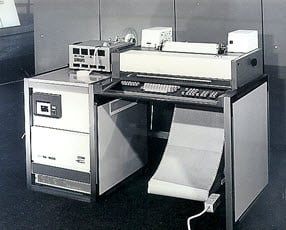VT R5 microcomputer
The machine was the first domestic attempt to implement computers with addressless (associative) programming.
New, in-house development, without prototype
Use
The basic purpose of creating the machine was to demonstrate that computers with addressless systems could be built.
It was also used experimentally for administrative tasks.
Hungarian research institutes
Structure
Central unit
- control system: semiconductor control circuits
- main memory: ferrite ring RAM
- calculator: semiconductor operation circuits
Periphery
- storage: 5.25″ floppy disk (MOM)
- external devices:
- built-in monitor (Videoton)
- keyboard
Operation
In the addressless computer, the calculator worked with stacks, in which it was relatively easy to perform simple operations, although the execution had to be formulated in a different way than traditional ones.
For example, a cycle can be executed by moving the program from the base stack to another stack, and then returning to the base stack that organized the cycle after the cycle body has run.
Program set
- operating system: none
- compiler: interpreter for a self-developed programming language similar to Forth
Historical curiosities
The machine was originally released by Videoton under the name VT 1005, as it wanted to prove that it was capable of producing computers of its own development. (Previously, they only produced clones and licensed machines.)
The prototype was shown at the 1974 BNV and even at exhibitions in France, but apart from a few experimental applications, there was no real market demand because its programming was unusual and difficult.
László Szőke later created an interpreter for the R10 machine, which implemented addresslessness in software.
Resources
Oral communication by László Szőke.
(László Szőke presented the structural and operating principles of untitled computers at the Systems Theory Conference organized by the National Academy of Sciences in 1973, but the material in the publication is no longer available.)
Created: 2016.07.06. 22:45
Last modified: 2020.07.24. 12:04

